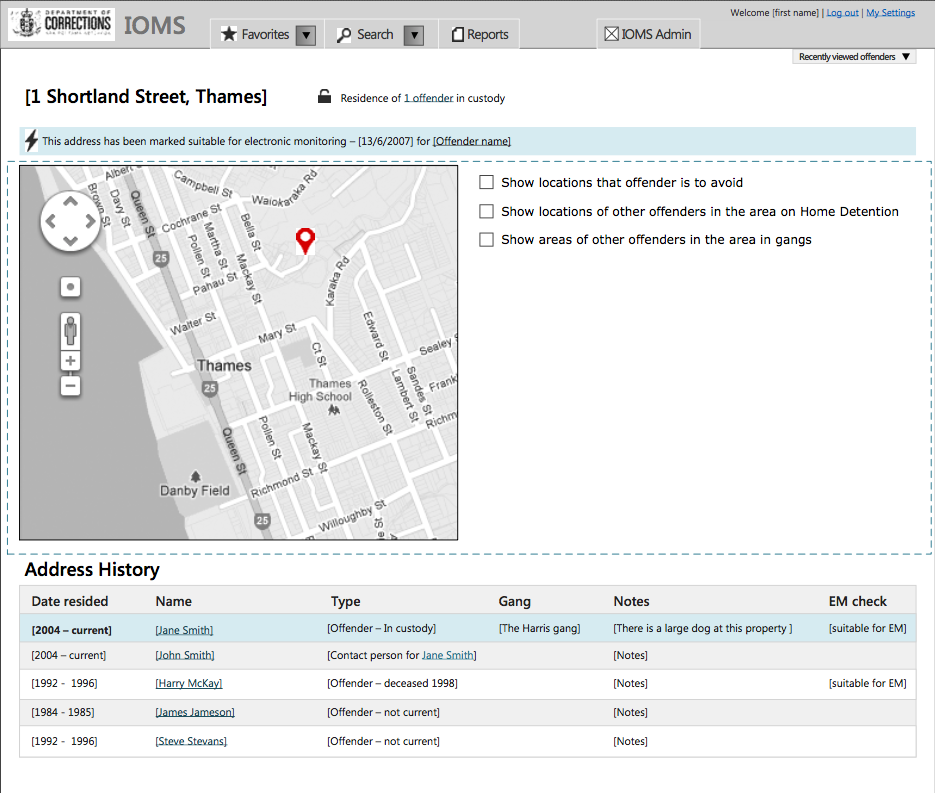Corrections New Zealand - Offender management
The corrections department engaged us to champion and design the UX of their offender management system.
What is offender management
The system manages all aspects of an offender was very slow and complex and was used by Probation officers, Prison officers, and Court probation officers (A representative of the Corrections Department that sits in court and relays details of an offender to the Judge).
Understanding the business
CHALLENGES
“Over simplifying designs would not be helpful and that clarity and flexibility were the keys solving this right.”
The initial requirements gathering / problem identifying was quite challenging as it involved:
bringing together different 'factions' across the department,
selling UX in to a face of strong critics with positions of power,
responding to technical requirement documentation and
working with offshore development teams.
The outcome of the work also needed to be integrate with other systems such as those used by Ministry of Justice and the NZ Police. Overall I identified that with such great amounts of complexity, over simplifying designs would not be helpful and that clarity and flexibility were the keys solving this right.
OVERCOMING CHALLENGES
Though this work was challenging, through frequent (sometimes daily) one on one catch-ups focussed on understanding their needs, I connected with many of the key individuals and developers, bringing them together to work collaboratively on designing for and understanding their users.
User Research
After understanding the department's operations processes and needs from a head-office point of view. I organised time to carry out contextual inquiry with each of the primary users of the IOMS system.
CONTEXTUAL INQUIRY
This involved sitting with Prison Officers, processing incoming prisoners at speed. Probation Officers having heartfelt phone calls with a parolee and Court Probation officers sweating under the stealy gaze of a court Judge demanding the details of an offender in an open court.
We were able to help the business learn more about the actual processes through recordings made on these days spent with the users.
DOCUMENTATION
I documented a set of needs per user with specifics nuances of each type. Though we did not title them them Personas, due to appetite for such deliverables within the business, they were essentially a variation on the UX Persona.
UX DESIGN
Finding an offender in the system
Prison officers were able to add new offenders to the corrections system by adding them from the police database. It was important here to persist with the jargon and acronyms that the corrections employees were used to as it otherwise it would slow them down.
Adding an offender to the system
Once the offender is found in the system. The corrections employee then selected the data they wanted to pull over into the IOMs system. There was a large amount of data duplication and discrepancy across all the system. Showing that there are multiple names and addresses here helped to mitigate these issues
Creating an offender from scratch
(No prior justice system records)
If an offender could not be found in the police systems they could be added here. Adding checks at this point further preserved the integrity of the data being entered. More importantly though, it ensured that officers working on an offenders file would not need to sift through many different versions of the same person.
Getting the info they need
Once the offender information was created each different user had very different data needs from this tool.
For example a prison officer needed to see what their approved phone numbers were or whether they were being monitored on phone calls. On the other hand the Community officers needed to know more personal details like notes they had written about their last catch up, who their relatives were and how many community service hours they had remaining.
Checking addresses
Community officers needed to check the appropriateness of an address when an offender's address changed. Highlighting the history of the location and its suitability for electronic monitoring help officers to make judgement calls about an offenders likely behaviour at this address.








